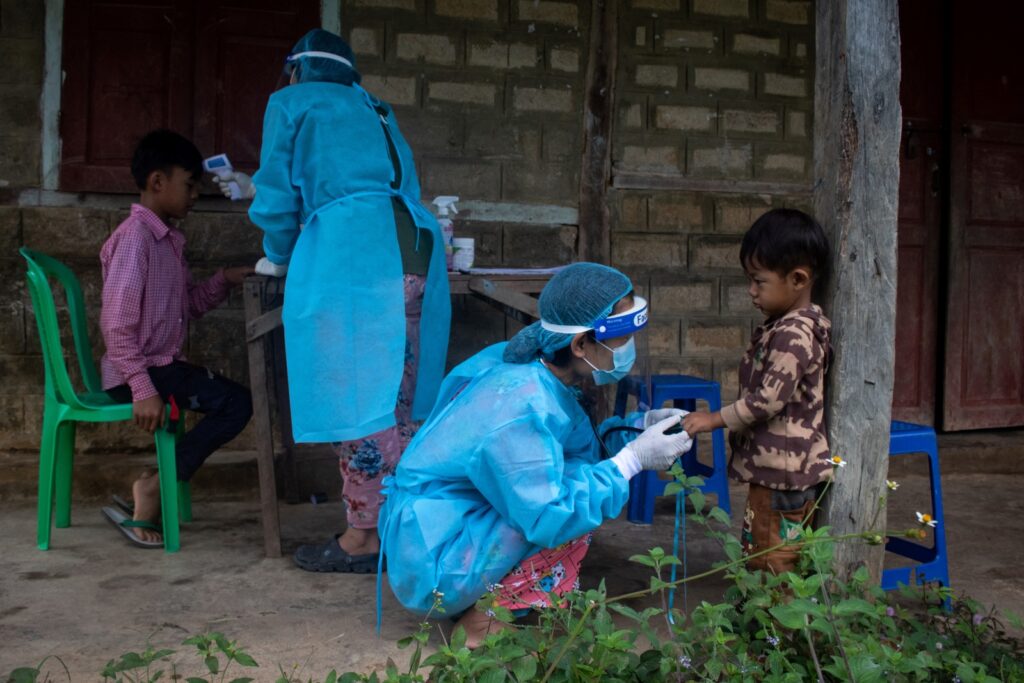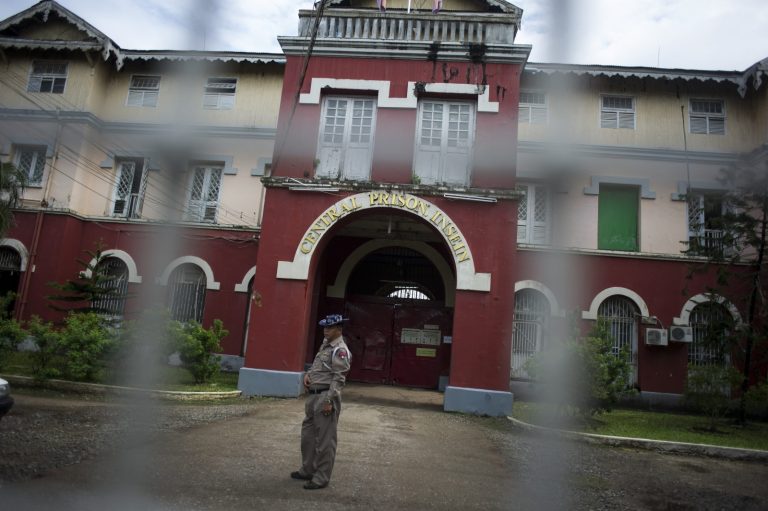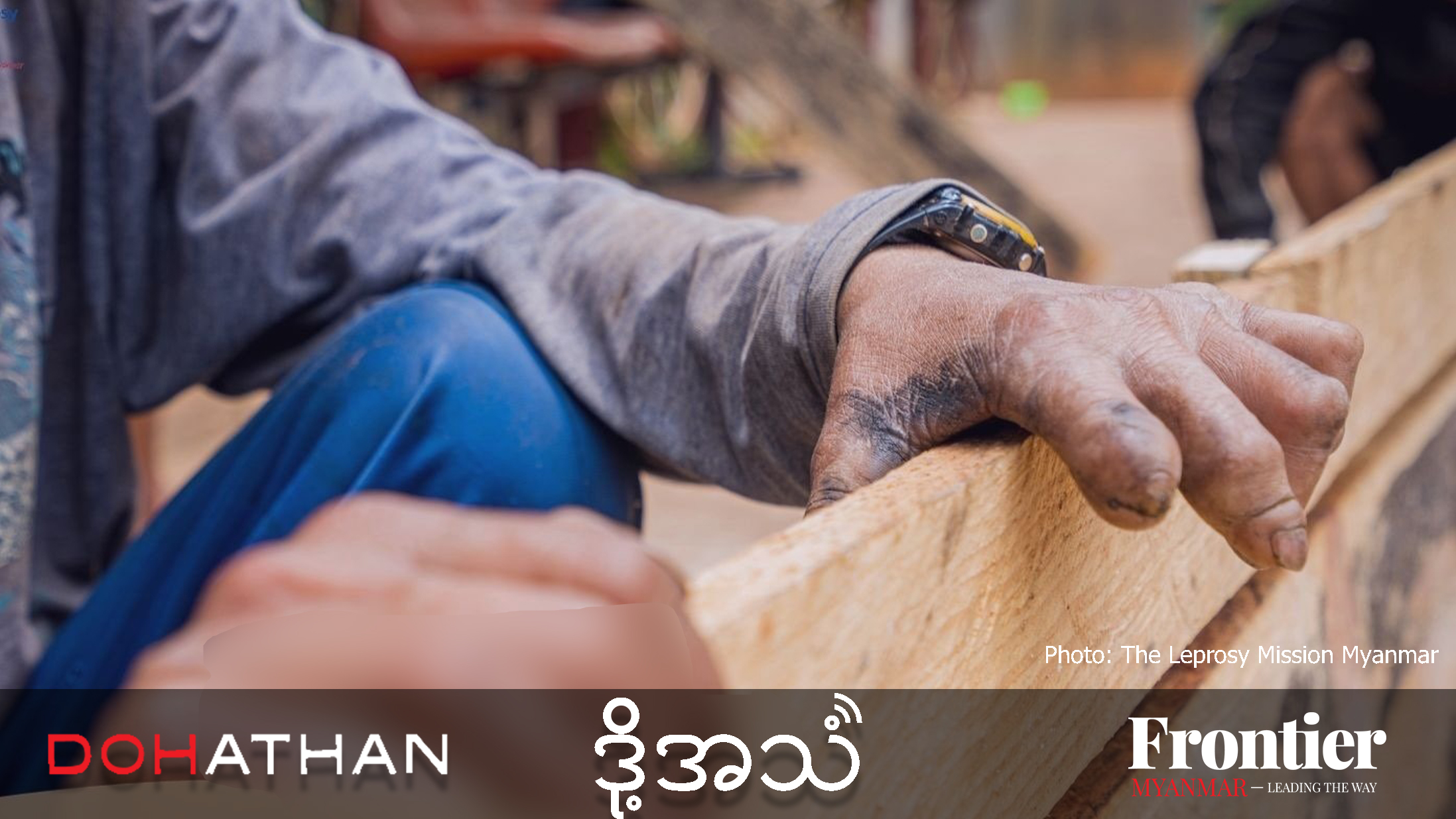Major international organisations have obeyed the military’s ban on working with parallel health services, leading to glaring disparities in childhood vaccinations that experts warn could endanger the entire country as well as the wider region.
By ANT PWEH AUNG | FRONTIER
Maw Mie Myar* stood nervously in line, anxiously watching the sky for signs of military aircraft. But she wasn’t on a battlefield or at a rebel base – she was simply getting her two-month-old daughter vaccinated.
It was November 25 last year, near a settlement for internally displaced people in an area controlled by the anti-regime Karenni Nationalities Defence Force in southern Shan State’s Pekon Township.
Due to security concerns and limited supplies, only around 30 of the 100 children from the IDP camp who had been registered in advance were able to get vaccinated. The healthcare workers gave Maw Mie Myar’s daughter four jabs – BCG for tuberculosis, a polio vaccine, PCV for bacteria that cause pneumonia and meningitis, and Penta-3 to protect against five illnesses including Tetanus and Hepatitis B.
She was monitored afterwards for about half an hour to check for any allergic reactions, then they returned to the IDP camp, never knowing who donated the vaccines or organised the healthcare workers.
“The number of vaccines is limited, so there was no instruction from the healthcare workers about when to return for her next shots,” said Maw Mie Myar, who worked for a non-government organisation on human rights and women’s issues before the 2021 coup. “I feel bad for the children who still haven’t been vaccinated.”
A foreign health expert working for an international NGO in Myanmar said this ad hoc immunisation method is known as “campaign style” vaccine delivery. He said it inevitably reaches fewer people than a more formal system, which currently isn’t viable in many war-torn parts of the country.
“Unfortunately, routine approaches… remain impossible in a context where clinics and delivery systems are frequently targeted in attacks by the Myanmar armed forces,” he told Frontier, asking to remain anonymous.
Like many in Myanmar, Maw Mie Myar’s life has been in turmoil since the military seized power in February 2021, sparking a political crisis and civil war. In May 2021, she fled her home in the Kayah State capital Loikaw, which like other houses in the town was completely destroyed in a subsequent airstrike. She took refuge in western Hpruso Township, south of Loikaw, before fleeing again in December that year. She got married in 2022, while still on the run, and gave birth to her daughter in September the following year.
But while only a limited number of people are able to get vaccinated in resistance-controlled territories, access is recovering in areas still controlled by the regime. Observers say this disparity is largely because international organisations obey the regime’s commands not to work with the armed resistance. But they warn that leaving pockets of the country unvaccinated could endanger everyone in Myanmar, as well as other countries in the region.
Vaccines crater after the coup
After the coup, many state-employed healthcare professionals joined a mass strike known as the Civil Disobedience Movement, including staffers working on immunisation programmes under the Ministry of Health. In response, the regime cracked down on emerging parallel healthcare initiatives, arresting striking doctors and bombing health care facilities in resistance-controlled territories.
As a result, child vaccination rates cratered to levels not seen since the 1980s. For example, between 2020 and 2021, the percentage of children vaccinated for measles dropped from 90 percent to 40pc, and went from nearly 90pc to less than 10pc for Japanese encephalitis.
A communications consultant for the World Health Organization in Myanmar, said the coverage for the DPT3 vaccine targeting diphtheria, whooping cough and tetanus was around 91pc in 2019. It then dipped to 84pc in 2020 during the COVID-19 pandemic, she said, before collapsing to 37pc in 2021 after the coup.
According to official figures, the rate has since partially recovered but remains below pre-coup levels at 71pc. However, some experts have cast doubt on these numbers.

“The current vaccine coverage released by international organisations of around 70pc is impossible because of the fighting throughout the country,” said Saw Ba Win from the Ethnic Health Systems Strengthening Group, a network of ethnic and community-based health organisations.
He said children from ethnic minority groups are particularly affected. Much – but not all – of the post-coup conflict is concentrated in border areas, where ethnic minorities have been neglected by the state for decades. Prior to the coup, some ethnic and community health groups in these areas received medical supplies from the central Myanmar government and then administered vaccines themselves.
But that cooperation has “completely stopped since the coup,” said the foreign expert at an international NGO. This was confirmed by a member of the Ta’ang Health Organization, which mainly operates in territory controlled by the Ta’ang National Liberation Army.
Disregarding the conflict and collapse of the health system, the regime’s healthcare ministry has instead pointed the blame at COVID-19.
While the pandemic is a convenient scapegoat, there does appear to be some correlation. The WHO said immunisation levels declined in over 100 countries in 2021 because of COVID-related travel restrictions, overstretched healthcare services and disruptions to global supply chains. But Myanmar is one of just 20 countries that accounted for 75pc of the total children who missed vaccinations worldwide that year, suggesting the coronavirus was far from the only culprit.
“Worldwide, zero vaccine children are very rare… The only cause that exists for zero vaccine children is that they are purposefully excluded by governments. This is, of course, what’s happened in Myanmar,” the foreign expert said.
The vaccination gap
Successive Myanmar administrations have depended on international organisations to support immunisation campaigns. The United Nations Children’s Fund, or UNICEF, has helped with delivery, WHO has provided technical assistance and the Global Alliance for Vaccines and Immunisation has covered nearly two-thirds of the vaccine costs.
The foreign expert said GAVI and UNICEF tried to persuade the regime to engage with opposition armed groups to administer vaccines “with ultimately no success” and have continued working exclusively with the regime.
Over the last three years, various international organisations and UN agencies have carefully played by the regime’s rules to maintain access to certain parts of the country, but have been blocked from resistance-controlled areas.
“It’s a major harm that’s been done to Myanmar’s children because of international organisations failing to be ambitious enough to cover everyone in Myanmar through approaches that are unusual but not unheard of,” the foreign expert said.
Neither GAVI nor UNICEF responded to requests for comment. But in contrast to their alleged approach, other international organisations are trying to fill the gap.
The foreign expert said that some of these organisations and their local partners have established cold-chain delivery systems to reach left-out communities. However, he said distribution “remains very limited” due to the need for secrecy, higher costs in the absence of GAVI’s financial support, security risks and various logistical challenges.
As a result, there’s a very uneven distribution of vaccines. The parents of 10 children aged under five who live in the country’s three biggest cities told Frontier that vaccines are easily accessed at local health facilities, but it’s a different story in conflict zones and areas controlled by resistance groups. The Karenni Interim Executive Council, a parallel government in Kayah, estimates that around 20,000 children need to be vaccinated, but a donor-funded pilot programme launched in April last year is only targeting 2,000.
The Karen Department of Health and Welfare, under veteran ethnic armed organisation the Karen Nation Union, said its vaccination programme in southeastern Myanmar was suspended after the coup and only restarted in June last year. As of December, it had vaccinated only around 7,000 children, compared to around 24,000 over a comparable period before the coup.
“We are struggling pretty hard to continue with the immunisations but it’s better than nothing,” said KDHW director Saw Diamond Khin, who said the group has only received support from one international organisation, which he declined to name.
He said they’ve also received funding from members of the Myanmar diaspora, and excess vaccines from Thailand’s Ministry of Public Health, but far more help was needed.
“The main reason we can’t do immunisation is not a lack of healthcare personnel but a lack of vaccines,” said Dr Nan Win, deputy head of the Pale Township People’s Administration Team in Sagaing Region. PATs are local parallel administrations under the National Unity Government, a cabinet appointed by elected lawmakers deposed in the coup.
Dr Nan Win said that as far as he knows, there are no NUG-led vaccine programmes in the region.
Meanwhile, the lack of vaccines in resistance territory is driving people to regime-controlled clinics and hospitals.
Bo Thanmani, leader of the Sagaing-based Yinmabin People’s Defence Force under NUG command, told Frontier that some parents in PDF-controlled areas travel to the regional capital Monywa to get their children vaccinated at junta-run health facilities.
But continued instability makes this impossible in some areas.

A spokesperson from the Ta’ang Health Organization told Frontier that after the coup, some Ta’ang people went to major towns like Lashio to get vaccinated at state health centres. But even that has stopped since the TNLA and its allies launched Operation 1027 in late October, seizing large swathes of territory across northern Shan State.
“These days, after 1027, people rarely go to the major cities for childhood vaccinations because they think it’s unsafe. Therefore, the number of Ta’ang children being vaccinated is very low.”
People in Kayah said the regime was able to resume vaccinations in the state capital Loikaw in 2022, but they were paused again in November last year when resistance groups launched an offensive to seize the town, where fighting continues.
“All four times, my child was vaccinated at a health centre in Loikaw,” said Mtay Moo*, mother of a nine-month-old boy who worked in the health ministry before the coup, and was displaced from her home in Loikaw during earlier clashes in 2021. “I was so worried for our safety when we went back to Loikaw, but I had to go there to make sure my child doesn’t get any infectious diseases.”
“I still don’t know where I can get the next round of vaccinations when my child turns one and a half years old,” she said.
A regional risk
The military routinely targets communities it believes support resistance groups, both as a form of collective punishment and to disrupt the flow of supplies to armed groups. The regime has also sought to undermine humanitarian responses outside of its authority, as it faces a crisis of legitimacy in the eyes of a public that mostly rejects its rule.
But while remote ethnic communities suffer the most, the junta’s tactics put the entire country – and possibly other countries in the region – at risk.
The Karenni IEC health department, KDHW and Pale PAT all told Frontier of an apparent rise in vaccine-preventable diseases, including measles, chickenpox and influenza, but could not give exact figures of cases.
“Low vaccination coverage at any level, whether national or subnational, creates vulnerability to the occurrence and outbreaks of vaccine-preventable diseases,” said the communications consultant for the WHO.
The foreign expert agreed, saying “pockets of unvaccinated individuals” put the entire population at risk by undermining herd immunity and allowing largely eradicated infectious diseases to reappear. He said the coup and the junta’s refusal to cooperate have also undermined programmes addressing other infectious diseases, like malaria and HIV, but added that, “at this time, it’s not possible to collect routine data in Myanmar to identify disease outbreaks of this sort”.
He warned that the deterioration in basic disease-prevention measures also threatens Myanmar’s neighbours, while the director of the Karenni IEC’s health department, who goes by the single name Emily, told Frontier it could even create a “pandemic in the future”.
“International organisations, including the World Health Organization, should conduct research on immunisation activities in conflict areas and issue emergency guidelines,” she urged.
Maw Mie Myar said that some of the children in the IDP camp where she lives have caught infectious diseases, including measles. Whenever one child gets sick, many others follow, putting more people at risk and forcing schools to close.
She said that whatever the risks, she will take her daughter wherever she needs to go to get her next round of jabs.
“I’m really worried my daughter won’t be able to get any more vaccines,” she said. “I’d feel like I’m not fulfilling my responsibilities as a parent if I can’t get my baby vaccinated.”
*denotes the use of a pseudonym for safety reasons







